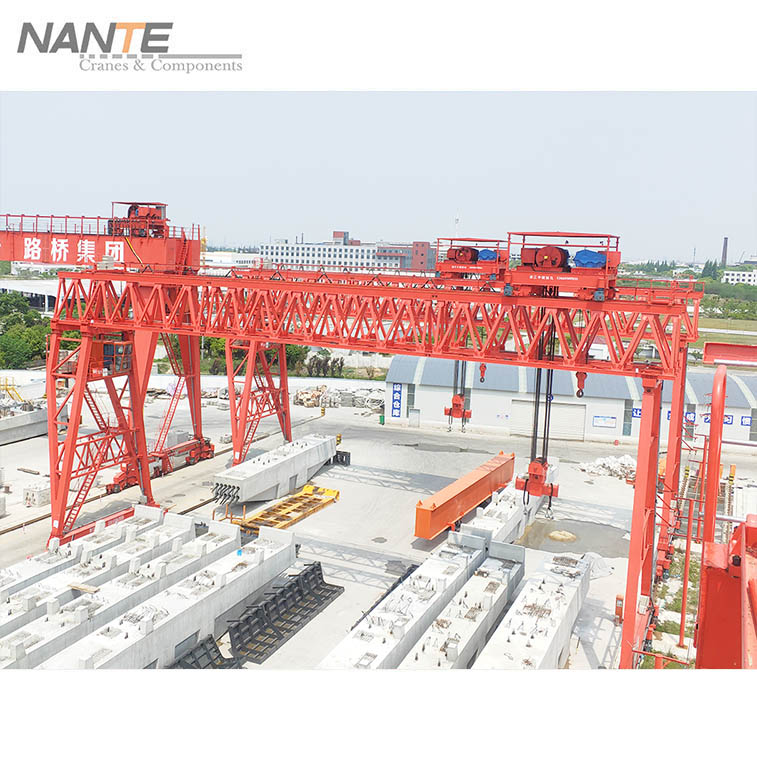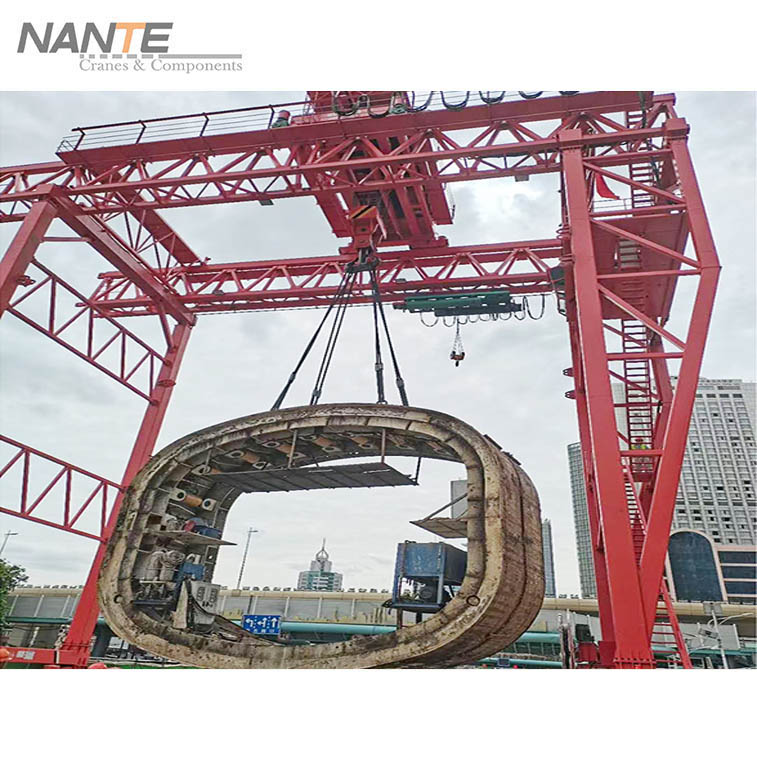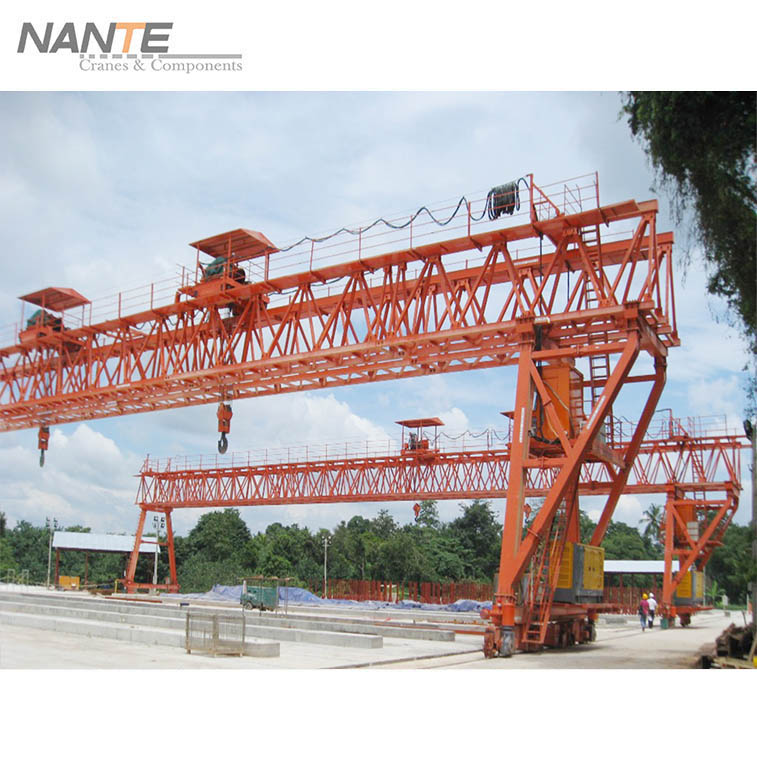Why Are Trusses Used in Cranes?
Date: 2024-02-16 Share:
What Is a Truss Gantry Crane?
Truss gantry crane is a kind of large-scale lifting machinery, its main beam adopts the truss form, this structure refers to a series of rods connected by welding or riveting and other ways to form a rigid structure. The components of truss gantry crane mainly include main girder, outrigger, upper crossbeam, lower crossbeam, lifting trolley and trolley running mechanism.
The main function of truss gantry crane is to carry out vertical lifting and horizontal handling of heavy loads through the use of main girder, outriggers and other structural components. Its working principle is mainly that it relies on the rotational force of the motor to change the position, height and angle, while the controller is able to precisely control the rate of lifting and movement. With high weight, good stability, smooth operation and strong adaptability, this kind of crane can be widely used in various scenarios, such as coal mines, harbours, dockyards, warehouses, factories, stations and so on.

In conclusion, truss gantry crane is an important material handling equipment with a wide range of applications and multiple classifications. When selecting and using them, comprehensive consideration needs to be made according to the specific working environment and needs to ensure the safe, efficient and reliable operation of the crane.
Why Are Trusses Used in Cranes?
Cranes use trusses for two main reasons: strength and efficiency.
A truss consists of a number of straight members (or rods) that are joined at the ends to form a rigid structure. This design distributes loads efficiently throughout the structure, ensuring that the crane can carry heavy loads without collapsing. The triangular shape of the truss provides excellent stability and resistance to deformation, making it suitable for carrying the enormous loads associated with crane operation.
Trusses are also lightweight compared to solid beams of similar strength, which is critical for cranes as reducing overall weight is essential for mobility and fuel efficiency. Additionally, trusses allow for more open space within the structure for maintenance and repair.
Specifically for cranes, trusses are typically used for boom and jib sections, the outreach arms that support and move the load. These sections must be strong enough to support the weight of the load, but also lightweight and manoeuvrable enough to allow for easy positioning. Trusses provide an ideal solution, combining both strength and weight in a single structure.
In short, the use of trusses in cranes is a key component of their design, allowing them to move heavy loads safely and efficiently while maintaining a manageable weight and size.

Classification of Truss Gantry Cranes – According to The Form of Main Girder
According to the main girder form classification, truss gantry cranes are mainly divided into single girder gantry cranes and double girder gantry cranes.
Single Main Girder Gantry Crane:
Single main girder gantry crane has the characteristics of simple structure, light weight and easy installation. Its main girder is generally an off-rail box frame structure, and there are two types of gantry legs: L-type gantry legs are light in weight, strong in stress capacity and easy to install, but the space at the legs is small; C-type legs are tilted or curved, and they have a larger transverse space, which is convenient for the goods to pass through the legs smoothly. Since the overall stiffness of single girder gantry crane is weak, it is more suitable for occasions with low requirements on lifting capacity and span.
Double Main Girder Gantry Crane:
Double girder gantry cranes have the characteristics of large span, strong stability of the whole machine, strong bearing capacity, large weight and high cost. Its main girder can be divided into box girder and truss two forms, of which the box girder is mostly. Double girder gantry cranes are suitable for occasions requiring large span and high load carrying capacity, such as large warehouses, wharves and so on. Because of its solid structure and high load carrying capacity, double main girder gantry cranes are widely used in engineering.
In short, the choice of single girder gantry crane or double girder gantry crane needs to be decided according to the specific working environment and needs. Single girder gantry cranes are suitable for occasions that do not require high lifting capacity and span, while double girder gantry cranes are suitable for occasions that require large span and high load carrying capacity.

Nante’s Truss Girder Gantry Crane
Nante offers different truss gantry cranes including Truss Gantry Crane with Hoist and Truss DG Gantry Crane with Winch.
Truss Gantry Crane with Hoist and Truss DG Gantry Crane with Winch are both types of gantry cranes that utilize truss structures for their main beams. However, they differ in terms of the lifting mechanism used and their specific applications.
Truss Gantry Crane with Hoist:
A truss gantry crane with a hoist typically uses a hoist mechanism to perform lifting operations. The hoist is a powered device that can raise and lower loads vertically, usually through the use of cables or chains. This type of crane is suitable for applications where precise lifting and positioning of loads is required. The hoist provides a controlled and accurate lifting motion, making it ideal for handling delicate or precision loads.
Truss DG Gantry Crane with Winch:
A truss DG (or “double girder”) gantry crane with a winch, on the other hand, utilizes a winch mechanism for lifting. A winch is a device that uses a drum and cable to pull or wind in a load. This type of crane is often used in heavier-duty applications where higher lifting forces are required. The winch provides a strong and reliable lifting capability, making it suitable for handling heavier loads or loads that require more pulling power.
In summary, the main difference between a truss gantry crane with a hoist and a truss DG gantry crane with a winch lies in the lifting mechanism used. The hoist offers precise lifting and positioning capabilities, while the winch provides strong lifting forces suitable for heavier loads. The choice between the two depends on the specific requirements of the lifting task, including the weight and nature of the loads being handled.
 English
English






